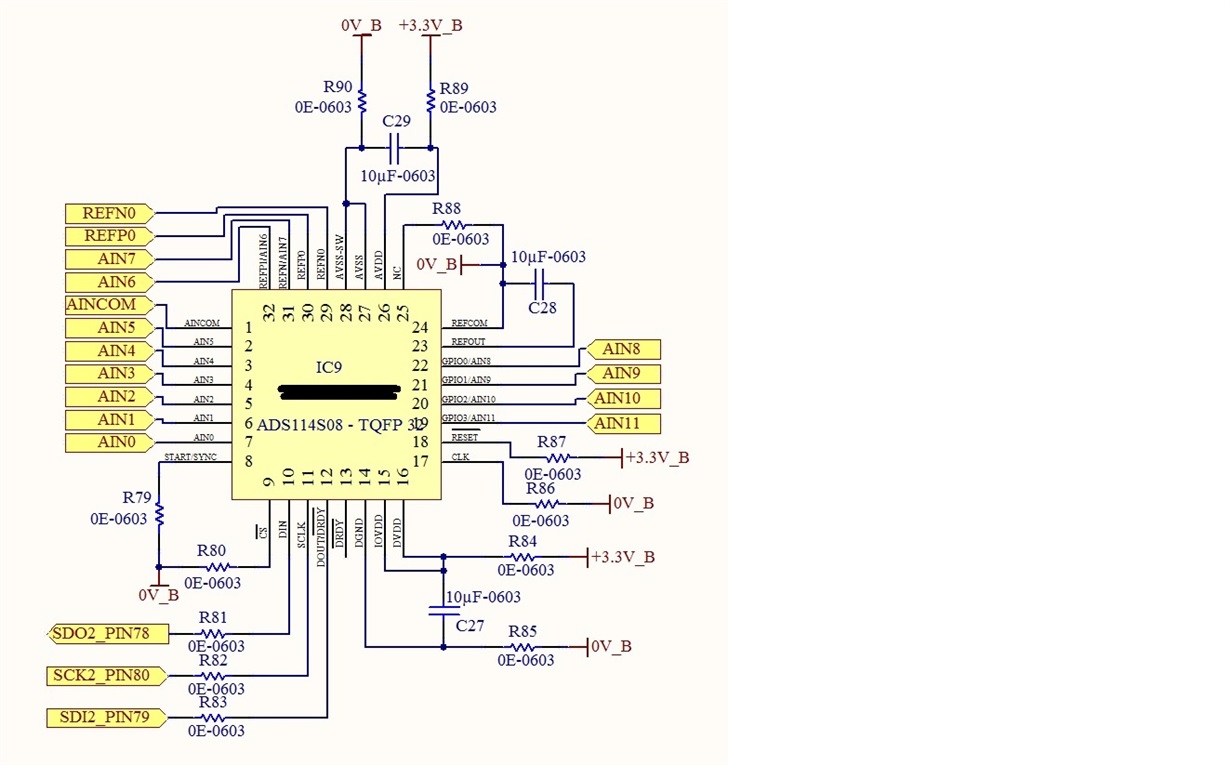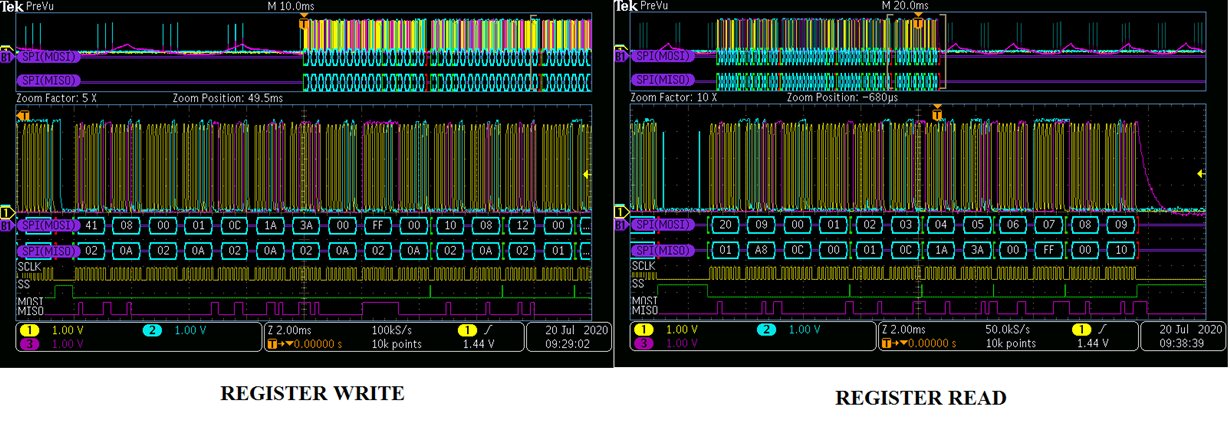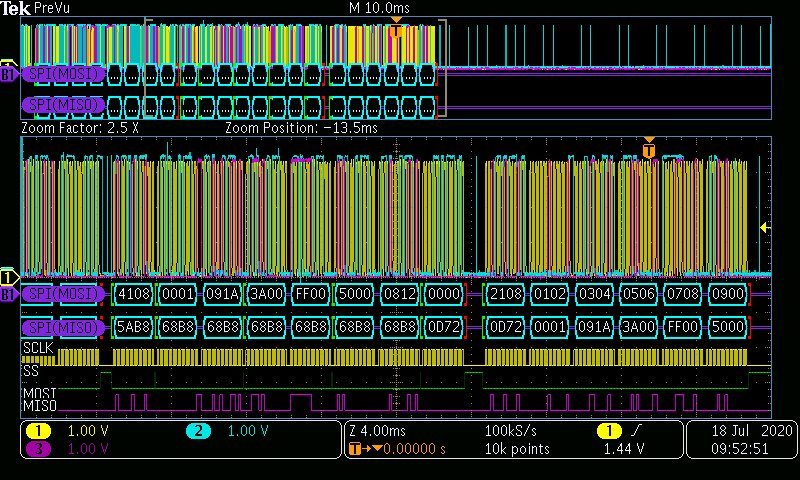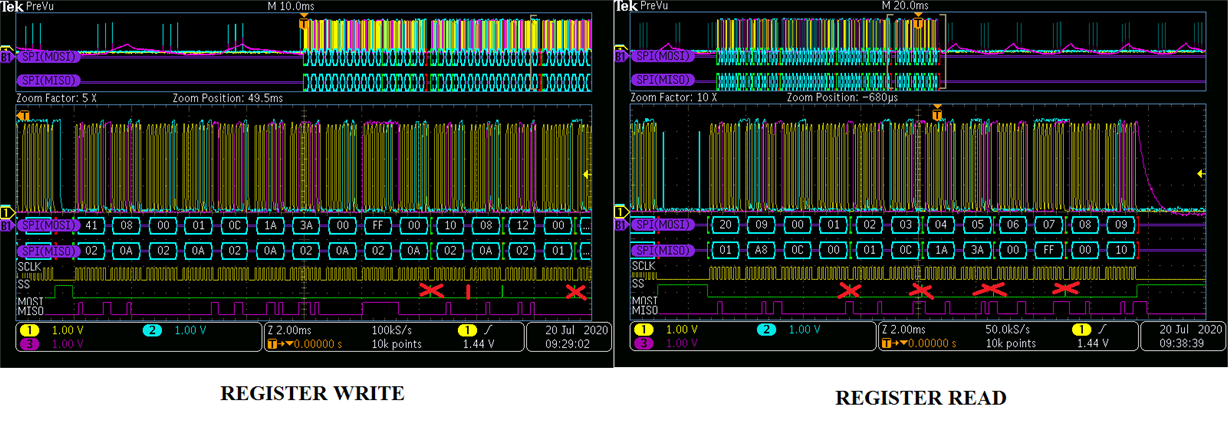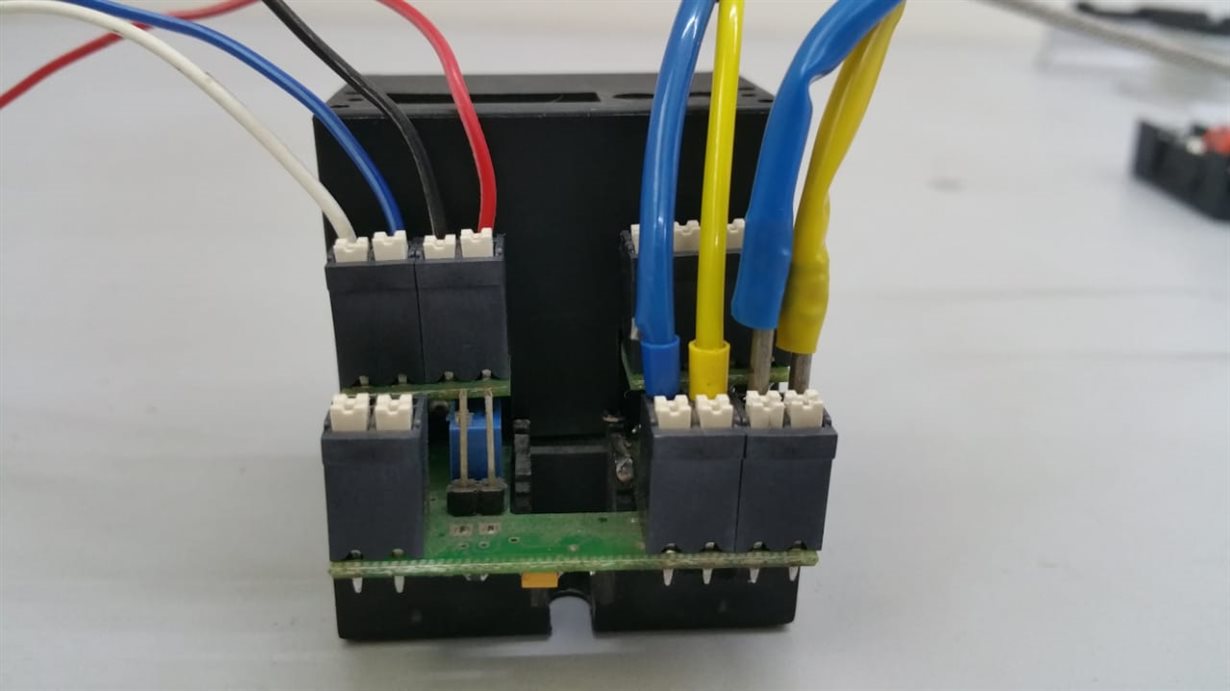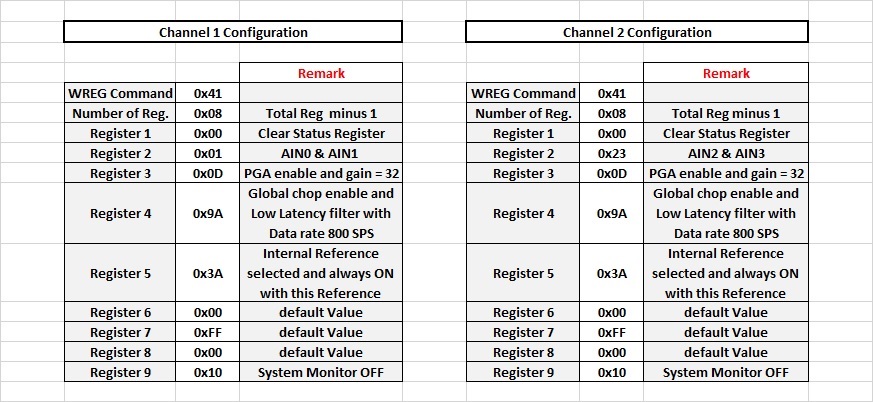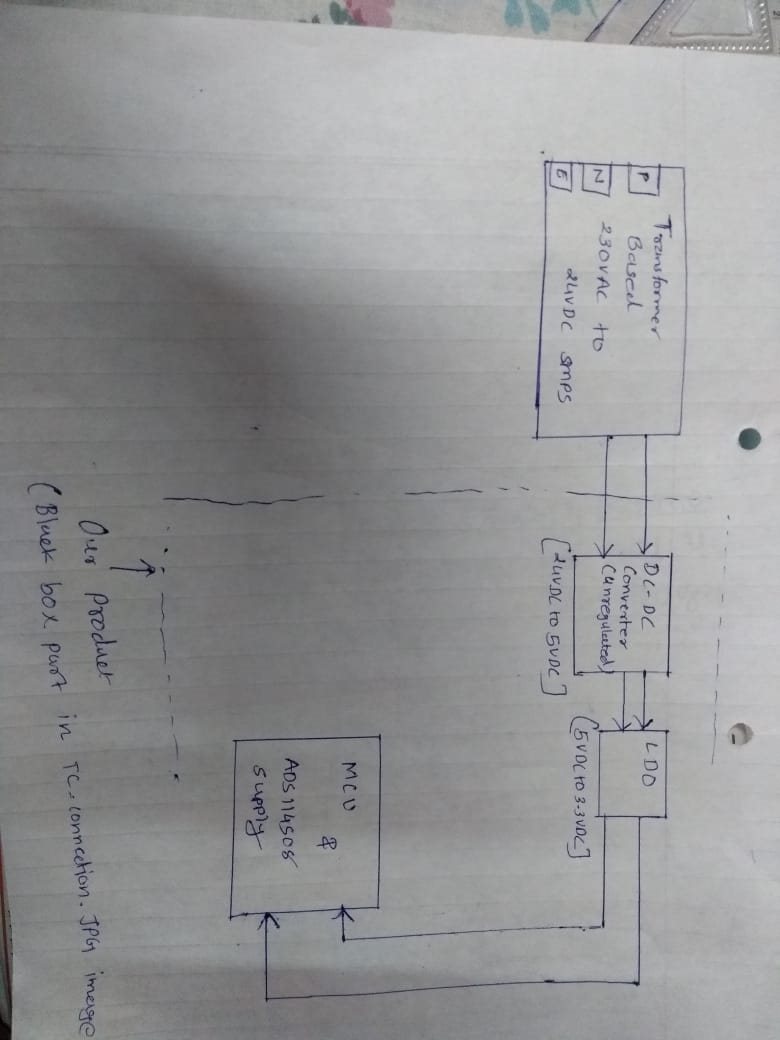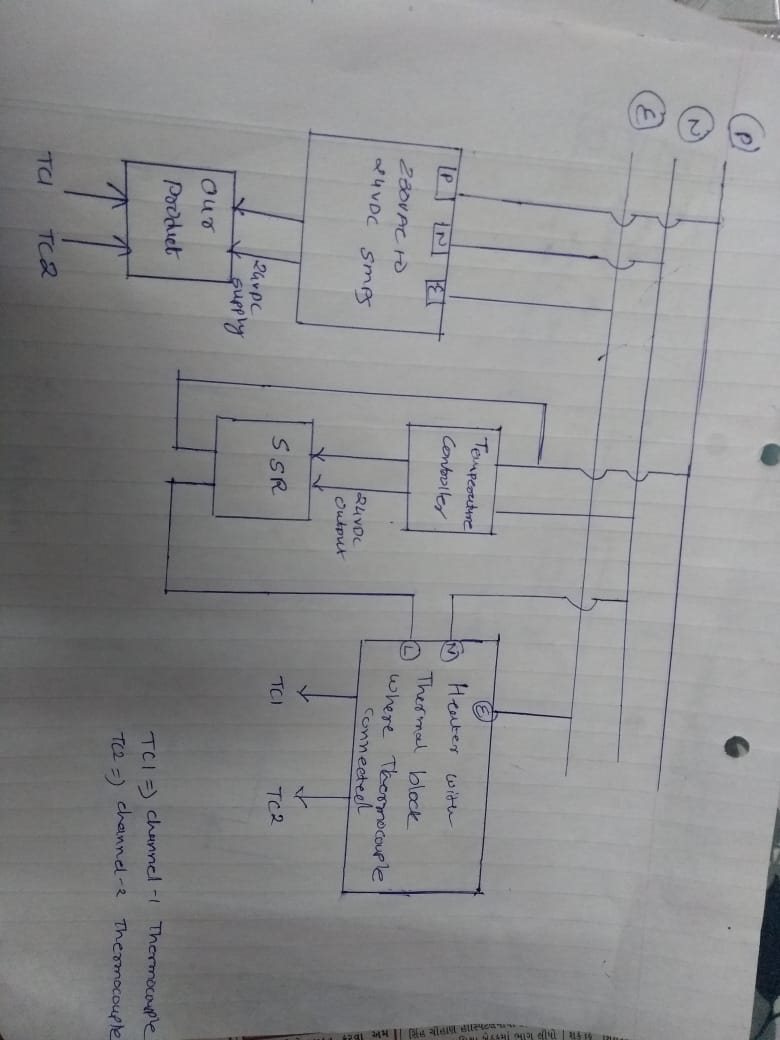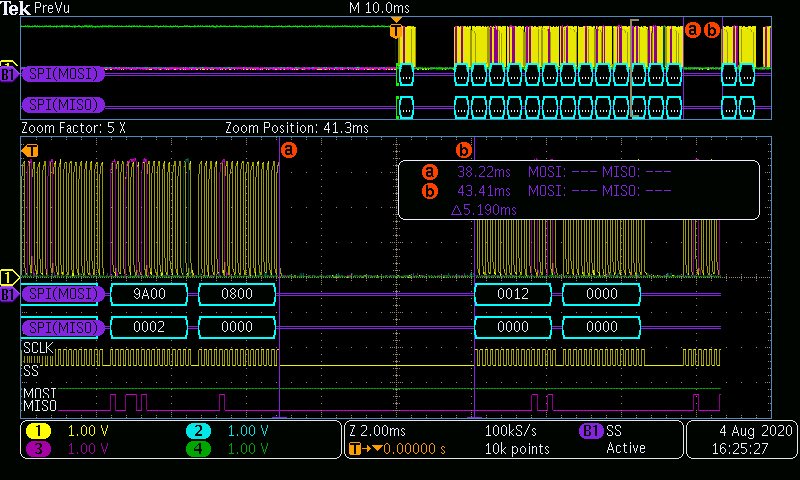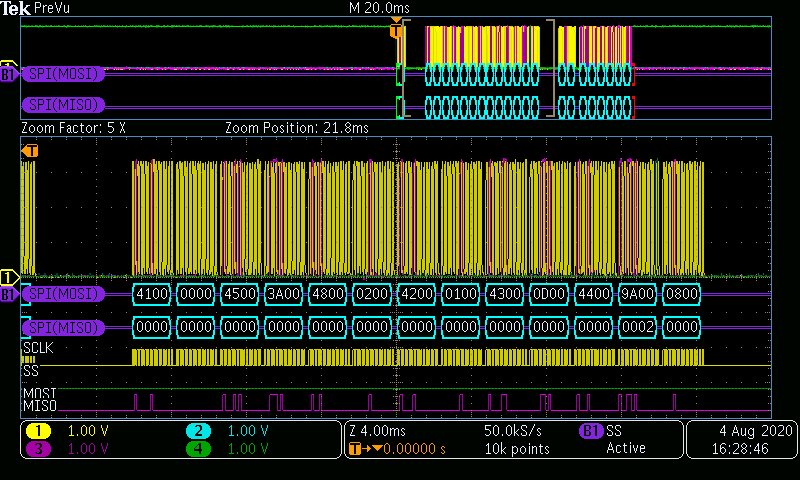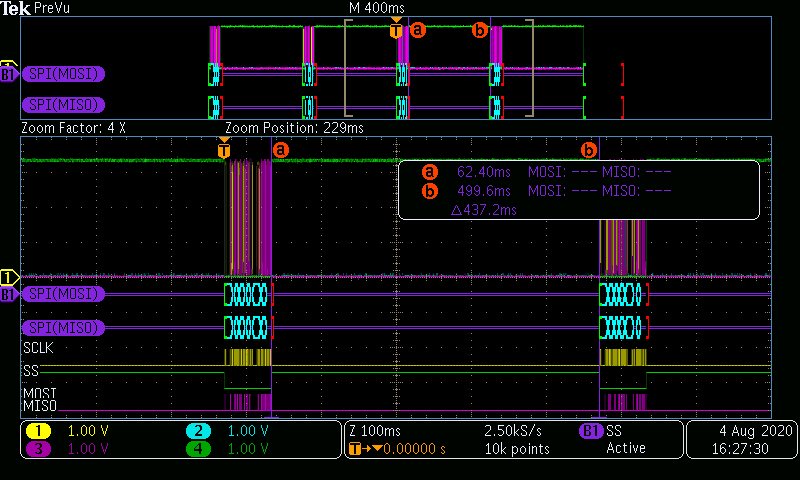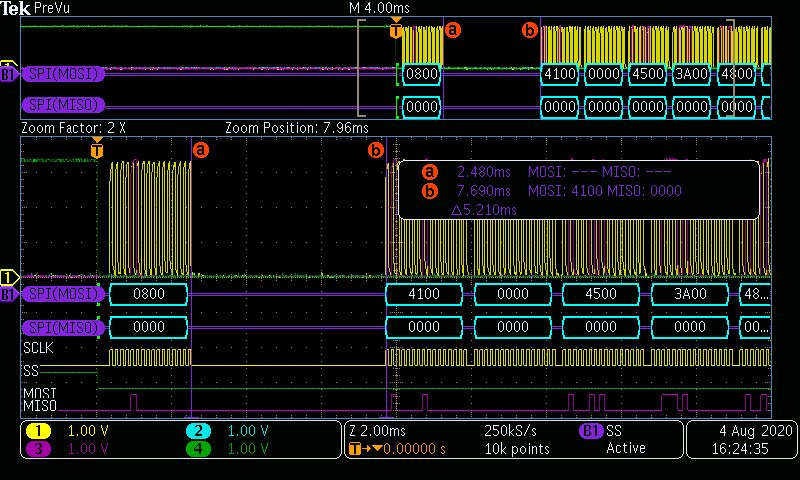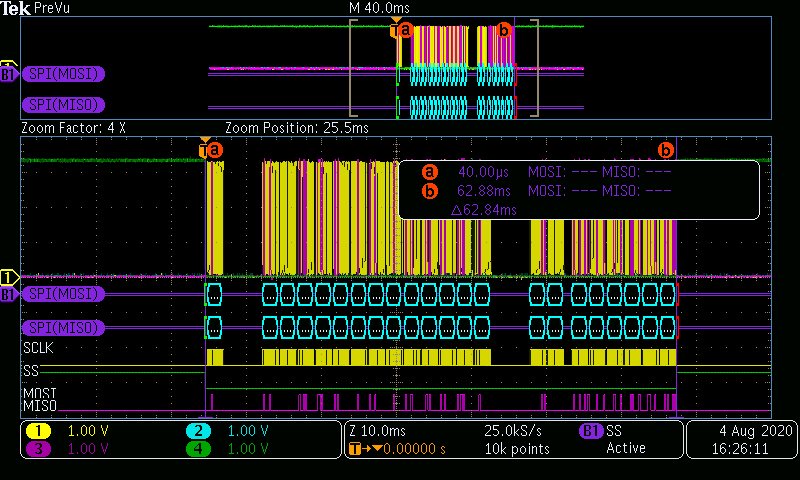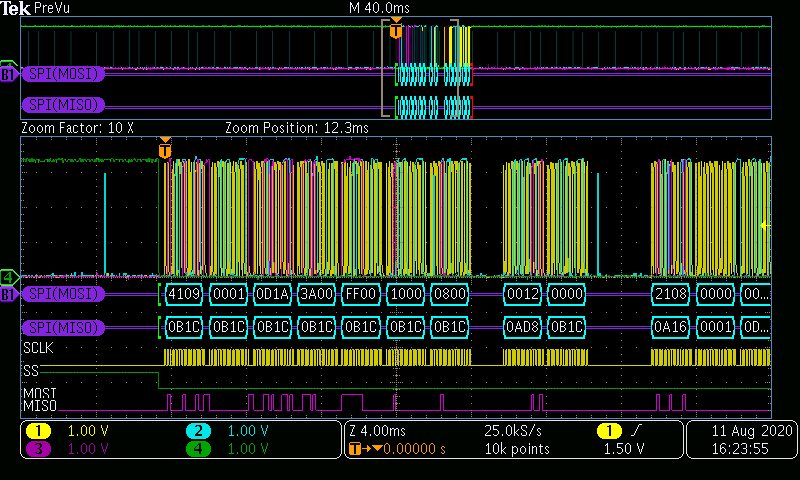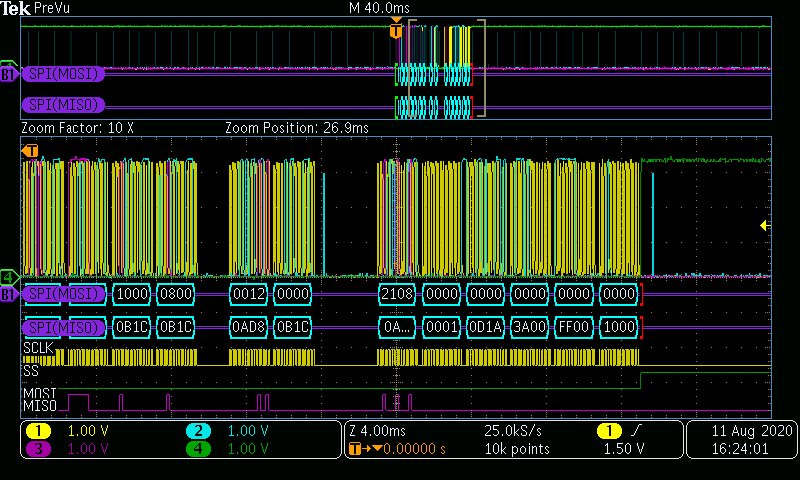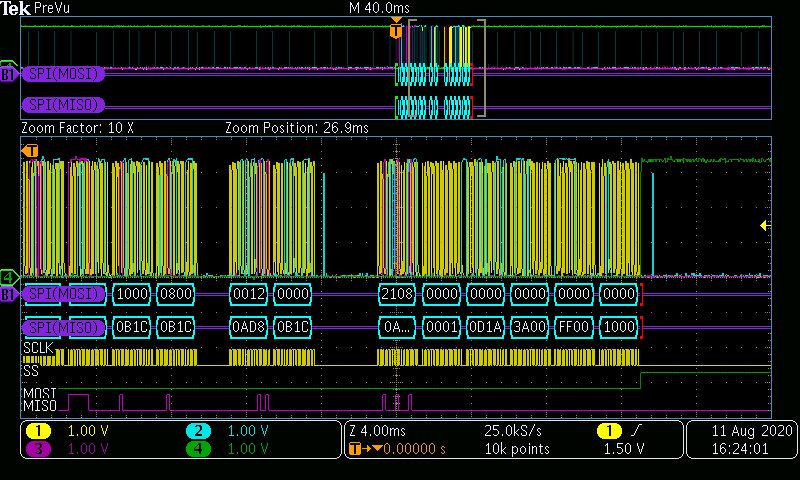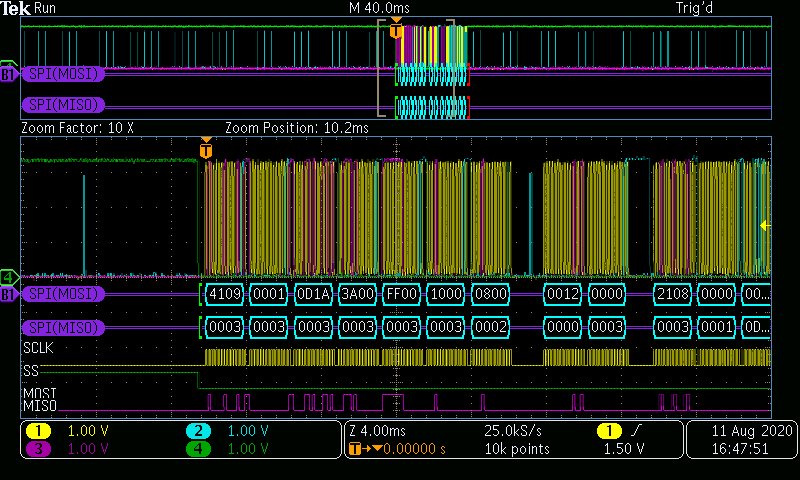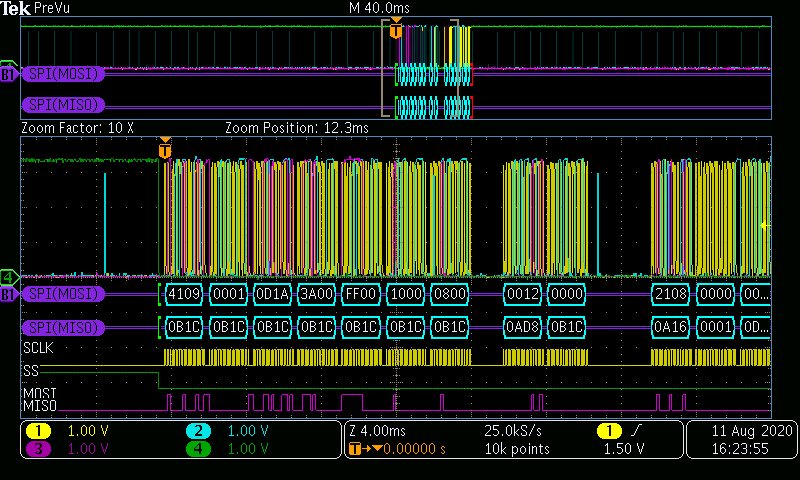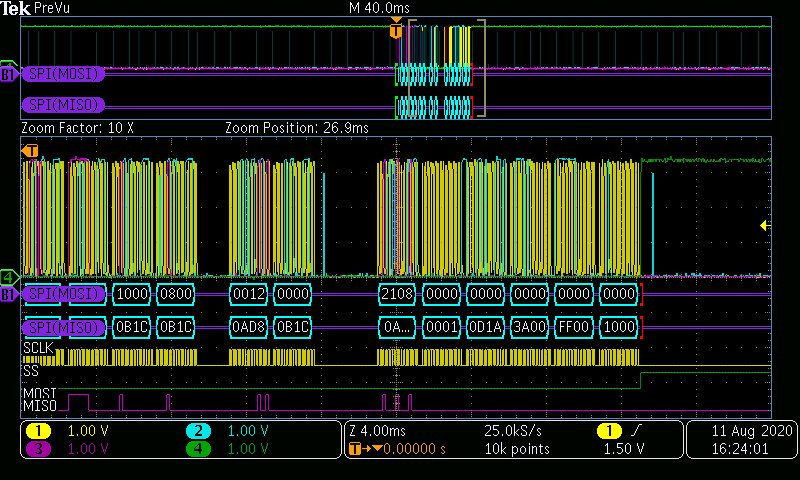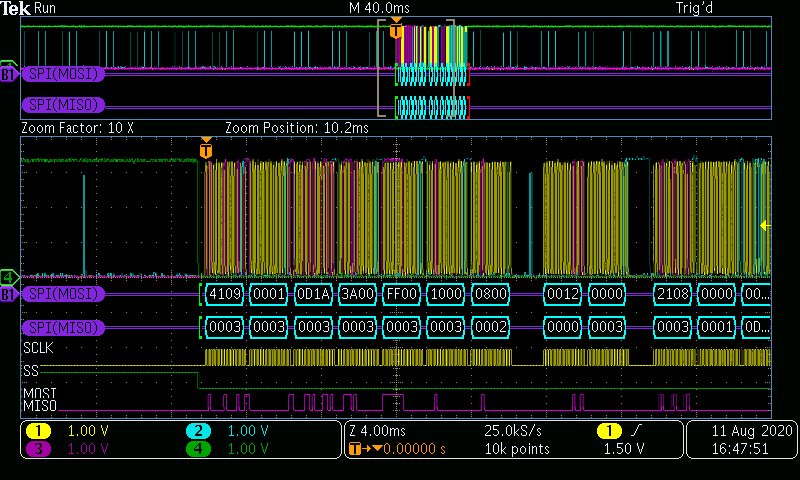Other Parts Discussed in Thread: ADS114S06,
Dear Sir,
We are back to this project once again.
Previously we are using IC ADS114S06.
But now our channel requirements are change so we are now change IC as ADS114S08.
Here below I have attached updated schematic diagram of circuit.
Consider all 3 controller pin (SDO,SDI,SCLK) connections are proper and directly connected to MCU.
There are no any external Pull UP / Pull Down resistors connected.
Currently we are trying to read ambient temperature of IC (system register value 0x50, Reference register value 0x1A, PGA value 0x09)
But we are always getting full scale reading (0x7FFF) instead of desired results.
Please suggest us proper solution for same.
Let us know is there any hardware modification is required or not?
Waiting for your quick reply.
Thanks and best regards,
Jehan Patel



